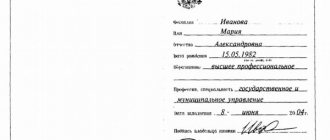21.07.2019
0
197
5 minutes.
The working relationship between management and employee may not always run smoothly. When certain problems arise, it is sometimes necessary to contact supervisory authorities, whose competence includes the ability to resolve such disagreements. The article describes the procedure for considering labor disputes and options for resolving conflicts between management and employees of enterprises.
What is a labor dispute
A labor dispute is usually called a conflict between an employer and employees of an organization that is submitted for consideration to a special commission or court. Such disagreements can be individual or collective in nature. In the latter case, the company's management may receive especially great damage in court proceedings. A strike is also a civilized way of protest, but such actions can cause very serious damage to the employer.
Disagreements leading to a controversial situation, as a rule, arise when there is a serious violation of the rights of people working in the organization, for example: delayed wages, illegal mass layoffs. Conflicts can also be provoked as a result of excessive demands on employees, including exceeding the established working hours.
Individual disputes especially often arise due to the employer’s refusal to pay upon dismissal. Many business managers in such situations try in every possible way to “impose” on the employee various expenses for eliminating material damage that could arise during the performance of their official duties.
Conflict situations may arise due to disagreements in the interpretation of the norms of the Labor Code of the Russian Federation. Of course, the employer understands the rules displayed in the document in his favor. Such disputes can only be resolved by contacting a special inspectorate or court.
It is important to know! Claims can be financial in nature, where an employer or employee seeks monetary compensation for damages suffered. In such a situation, the injured party will need to file a claim with a judicial authority. In non-material conflicts, the subject of dispute may be the employee’s legal rights to rest, receiving additional leave, and issuing the necessary documents upon dismissal.
Trial in court. Nuances
The procedure for considering individual labor disputes in court is regulated by Articles 391-397 of the Labor Code. The courts, on the one hand, restore rights that have been violated, and on the other, find the grounds and conditions for violations, and carry out preventive measures to prevent them. This authority can make representations to government agencies, public organizations and specific officials to ensure that violations, conditions and causes are eliminated.
In the process of considering labor disputes, the court is guided by the provisions of the TC, CPP, as well as the PP of the Supreme Court on labor matters, for example, the PP of the Supreme Court of the Russian Federation “On some issues of the use of legislation in resolving labor disputes by courts.” The court decides whether to accept the application for consideration or reject it on the basis of Articles 133 and 134 of the Code of Civil Procedure of the Russian Federation.
Competent authorities
Contacting the labor dispute resolution authorities can help resolve the conflict. Such organizations include:
- Labor Dispute Commission.
- Court.
Consideration of labor disputes by a special commission is carried out in accordance with current legislation. Such a body is created directly at the enterprise or institution where a conflict has occurred between employees and management. The commission consists of an equal number of representatives from each side. The Committee deals with the settlement of individual disputes only. If for one reason or another the commission was unable to resolve the situation, the injured party has the right to file an application in court.
Some disputes cannot be resolved in a commission. For example, all conflict situations related to discrimination in the workplace can be resolved exclusively in court. The competent authority is capable of resolving not only individual disputes, but also adjudicating a class action. Both employers and employees lose cases in court, even when the application is filed as a team. For example, a court may declare a strike illegal with all the ensuing consequences for people who, by prior agreement, decided to suspend the performance of their duties.
The second body authorized to review ITS is the court.
The employee may exercise the right to postpone the consideration of the ITS to the court when the Commission has not considered it within the allotted time, and to appeal the Commission’s decision in court if he disagrees with it. He applies to the court with a statement on disputes considered exclusively by the courts:
“On reinstatement at work, regardless of the grounds for termination of the employment contract, on changing the date and wording of the reason for dismissal, on transfer to another job, on payment for forced absence or on payment of the difference in wages for the time of performing lower-paid work, on unlawful actions (inaction ) the employer when processing and protecting the employee’s personal data (Part 4 of Article 391 of the Labor Code of the Russian Federation).”
Only in court are ITS considered on appeals from citizens who have been refused employment, who consider themselves to have been discriminated against, or who are employed under an employment contract in organizations with uncreated ITS.
A citizen who believes that his labor rights have been violated has the opportunity to choose his preferred method of resolving ITS. He can first write an application to the Commission on disputes that it is authorized to consider. If you do not agree with her decision, write a statement to the court. There is also a direct way - to go straight to the magistrate's court.
The State Labor Inspectorate, which workers often turn to to protect their rights, is not authorized to review ITS.
Procedure for consideration
In order to defend your legal rights, you need to know the principles and procedure for resolving labor disputes.
Individual disputes
If consideration of an individual dispute takes place in a commission, then first of all a statement from the plaintiff must be registered. After proper registration, the nuances of the case are analyzed in the presence of the applicant. This rule can be ignored only if the injured party notified the commission in writing of the plaintiff’s inability to attend the meeting. If the plaintiff fails to show up twice at the appointed time, the application may be cancelled. Termination of actions in a case does not prohibit the injured party from initiating a dispute again.
If the commission was correctly constituted and the conflict situation was considered at the meeting, then the decision is made by secret ballot. Upon completion of this action, the paper is signed by the chairman of the commission, after which the employee and the employer each receive one copy of the document.
The decision of the dispute commission can be appealed in court. In addition, in many situations, conflict resolution is permitted by law only in this instance. It is recommended to be guided in resolving such disputes in accordance with Articles 390 – 397 of the Labor Code of the Russian Federation. When regulating proceedings, jurisdiction must be strictly observed, otherwise the claim of the injured party may be denied. For example, an appeal regarding reinstatement at work or compensation for material damage should be sent directly to the judicial authority, bypassing the commission for considering this type of conflict.
It is important to know! It should also be noted that if the employer fails to comply with legal decisions voluntarily, he may be forced to do so by the bailiff service.
Collective disputes
Collective labor disputes are considered by a service that, at the state level, deals with conflict resolution between employees and employers of companies and organizations. A special feature of the situation is the fact that only representatives of the parties take part in the process. It is also possible to resolve the dispute in court or in a commission created at the enterprise. Collective disagreements are usually resolved in the following sequence:
- The subject of the dispute is determined. That is, the reasons why employees consider themselves to be the injured party.
- Making attempts to resolve the situation peacefully. Representatives of the team discuss with management how to resolve the conflict.
- The work of the conciliation commission. It is created at the enterprise from an equal number of participants from each side. The case review process ends after a decision is made on the stated problem.
- If even after this it was not possible to achieve positive results, an external specialist is invited to the enterprise, with whose participation the further consideration of the case will be carried out.
- If there are no positive changes in the dispute, the case is referred to the arbitration court, which makes the final decision.
The decision of the last instance is mandatory; otherwise, administrative measures may be taken against the party evading this.
Features of applying to the CTS.
An employee can appeal to the labor dispute commission within three months from the day he learned or should have learned about a violation of his right (Article 386 of the Labor Code of the Russian Federation). If the specified period is missed for valid reasons, the CCC can restore it and resolve the dispute. Please note that the list of valid reasons is not fixed by law, so the validity of missing a deadline will be assessed by the commission in each specific case. That is, the employee must write a written statement to the commission, in which he indicates the subject of the dispute and cites the facts based on which he considers his right to be violated. Such an application is subject to mandatory registration by the specified commission.
The procedure for consideration by the CCC of an individual labor dispute is established by Art. 387 Labor Code of the Russian Federation. The dispute is considered in the presence of the employee who filed the application or his authorized representative. Consideration of a dispute in the absence of the employee or his representative is allowed only upon his written application. If the employee or his representative does not appear at the meeting of the CCC, the consideration of the labor dispute is postponed. In the event of a second failure of the employee or his representative to appear without valid reasons, the commission may decide to withdraw the issue from consideration. True, this does not deprive the employee of the right to file an application for consideration of the labor dispute again within three months.
To clarify the circumstances and facts of violation of the rights of an employee, the CTS may call witnesses to the meeting and invite specialists. Moreover, at the request of the commission, the employer (his representatives) is obliged to submit the necessary documents to it within the period established by the commission.
You may ask: what to do if an application is received from an employee, but there is no CTS in the organization? turn to
t. 384 of the Labor Code of the Russian Federation, which explains the procedure for creating such a commission. It can be formed on the initiative of:
• workers (representative body of workers);
• employer (organization, individual entrepreneur).
The number of representatives from the parties to the labor relationship must be equal. Typically, representatives on the employer’s side in the CTS are appointed by the head of the company or the employer - an individual entrepreneur, and on the employee’s side - they are elected by their general meeting (conference) or delegated by the representative body of employees with subsequent approval at the general meeting (conference).
Regardless of who is the initiator of its creation, the CCC must be formed within 10 days from the date of receipt of the application. She needs her own seal, and the employer is obliged to provide her with the material and technical base for her work.
The Labor Dispute Commission elects from among its members a chairman, a deputy chairman and a secretary, who keeps the minutes of the meeting. A meeting of the CCC is considered valid if at least half of the members representing employees and at least half of the members representing the employer are present.
To make a decision, the members of the commission present at the meeting vote secretly, then the decision adopted by a simple majority of votes is announced. It must be in writing. It states (Article 388 of the Labor Code of the Russian Federation):
• the name of the organization or the last name, first name, patronymic of the employer - individual entrepreneur (or the name of the structural unit if the dispute is being considered by the CCC of this unit), last name, first name, patronymic, position, profession or specialty of the employee who applied to the commission;
• dates of application to the commission and consideration of the dispute, the essence of the dispute;
• last names, first names, patronymics of commission members and other persons present at the meeting;
• decision on the issue and its justification (with reference to the law, other regulatory legal act);
• Voting results.
Copies of the decision of the labor dispute commission, signed by the chairman of the commission or his deputy and certified by the seal of the commission, are handed over to the employee and employer or their representatives within three days from the date of the decision.
note:
by virtue of Art. 389 of the Labor Code of the Russian Federation, the decision of the labor dispute commission is subject to execution within three days after the expiration of ten days provided for appeal.
The employer is obliged to comply with the decision of the CCC. If this is not done, the commission will issue the employee a certificate certified by its seal, which is an executive document. The employee has the right to apply for such a certificate within one month from the date of the CTS decision. The certificate is not issued if the employee or employer applied within the prescribed period to transfer the labor dispute to the court.
On the basis of such a certificate, bailiffs forcibly enforce the decision of the CCC if the employee contacts them within three months from the date of receipt. Even if the certificate bears the seal of the organization and not the CTS, this will not prevent bailiffs from working, which is confirmed by judicial practice. In particular, the FAS VSO, in its Resolution dated April 23, 2007 in case No. A78-915/06-F02-1834/07, indicated that the organization’s seal on CTS certificates does not deprive them of the force of executive documents.
Basic principles of conflict resolution
The basic principles for resolving conflicts at work are the following criteria:
- Democracy;
- Availability;
- Legality;
- High review speed;
- Ensuring the execution of the decisions of the competent authorities.
During the settlement of a dispute, each employee must have the opportunity to express his opinion personally or through his representative. Access to justice in such cases is achieved by free participation. At the same time, the employee may not be distracted from performing his duties and attend meetings of the established conflict resolution body during non-working hours.
The high speed of consideration is explained by the current legislative norms. If they are violated, the conflict cannot be resolved and the case is transferred to another supervisory authority, or the commission at the enterprise must be created anew.
The mandatory implementation of decisions made is ensured by the bailiff service, but usually the defendant independently eliminates the violations that led to the emergence of a controversial situation.
Why disagreements arise
Disagreements between the parties are resolved through negotiations, for example, between the healthcare workers' union and the management of the organization or by referring the dispute to a third party for resolution. In the agreement adopted, the parties must recognize that the agreements are achievable given the resources available. Otherwise, the labor dispute is only suspended for some time, and then the situation gets even worse.
Disputes may arise during negotiations on the conclusion of a collective agreement, when adopting acts on the provisions of the TC, due to a requirement to establish or change working conditions for the employer, and so on. The term of a collective labor dispute begins from the moment the protocol of disagreements is drawn up or from the day the employer informs about the refusal of the employees’ demands.
Employees can make demands at meetings. They are approved in writing and sent to the employer. A copy may be sent immediately to the Service. The employer reviews the requirements and makes a decision within 3 days. If the demands are put forward by a trade union, then the review period is 1 month.
The disagreement between the employer and employees in this case is based on ILO recommendation No. 92, which establishes the following:
- Conciliation bodies are formed to resolve disputes.
- These organs must be mixed.
- They include an equal number of representatives from employees and employers.
All agreements reached are recorded in writing and have the same force as contracts. The parties do not always reach reconciliation through voluntary negotiations. In such cases, the conflict situation is resolved through labor arbitration. Moreover, both parties must initially recognize the binding nature of the decision of this authority.
It turns out that collective disputes can be resolved independently through a conciliation body or through an arbitration body. Moreover, the parties must first try to resolve the dispute on their own or with the help of a mediator. If this fails, then they turn to labor arbitration.
Participants in the dispute
Individual labor disputes arise not only between an employee and an employer. Claims of various kinds may arise from a former employee, as well as from a citizen who wants to enter into an employment relationship, which was denied to him for some reason by his employer. Most often, the latter includes denial of employment due to criteria that violate human rights (religious preferences, nationality, appearance, etc.).
Article 381 of the “Labor Code of the Russian Federation” dated December 30, 2001 N 197-FZ
:
An individual labor dispute is a dispute between an employer and a person who previously had an employment relationship with this employer, as well as a person who has expressed a desire to conclude an employment contract with the employer, if the employer refuses to conclude such an agreement.
When individual labor disputes go to court - an overview of the main situations
Whatever the procedure for pre-trial consideration of individual labor disputes and the method of resolving conflicts, some situations can only be resolved in court.
Let's take a closer look at them.
Situation 1. The parties do not agree with the decision of the commission
The decision made by the CCC comes into force after 10 days. This period is given so that either party can appeal it if they disagree. This happens quite often.
Example
Nikolai Vasilyevich initiated proceedings in the CTS at his enterprise regarding the refusal to pay him double overtime. The commission considered that the employer has the right to replace the cash payment with the provision of time off. The employee did not make such a request.
Nikolai Vasilyevich hired a lawyer and went to court. Since the commission had all the necessary documents, this was not difficult. The case of an individual labor dispute was considered in the presence of the plaintiff, a representative of the administration and the chairman of the CCC.
The plaintiff stated that he did not need additional days off, so he did not ask for them. The court sided with him and ordered the company to pay all the money in full.
Situation 2. The applicant files a lawsuit, bypassing the commission
Many people simply do not trust the commission, believing that its members are under pressure from management. This is partly true and occurs in some enterprises.
Therefore, the applicant goes to court to consider individual labor disputes, regardless of their subject and content. This approach is justified only if there really are grounds to doubt the impartiality of the CCC.
Situation 3. The commission’s decision violates the Labor Code
There are cases when commission members are so incompetent that they make decisions that violate labor laws. Moreover, this can be both in favor of the plaintiff and in favor of the defendant. In such cases, lawyers recommend appealing the decision of the CCC in court. If there are obvious violations of the law, it will not be difficult to win the case.
Court
How are individual labor disputes handled in court? According to the current norms of the Civil Procedure Code. When turning to judicial authorities for disputes arising during labor relations, a citizen does not pay
no government fees or legal costs.
Section 333.36. "Tax Code of the Russian Federation" dated 05.08.2000 N117-FZ
:
The following are exempt from paying state fees in cases considered by the Supreme Court of the Russian Federation in accordance with the civil procedural legislation of the Russian Federation and the legislation on administrative proceedings, courts of general jurisdiction, and justices of the peace: plaintiffs - in claims for the recovery of wages (monetary support) and other requirements , arising from labor relations, as well as claims for the recovery of benefits.
Magistrates consider all labor disputes with the exception of:
- reinstatement cases
; - collective labor disputes
.
The execution of decisions on individual labor disputes ordered by the court has its own deadline. Thus, when considering the case by the Supreme Court
of illegal dismissal, the decision is enforced immediately after it is made.
Article 396 of the “Labor Code of the Russian Federation” dated December 30, 2001 N 197-FZ
:
The decision to reinstate an illegally dismissed employee or to reinstate an employee who was illegally transferred to another job to his previous job is subject to immediate execution. If the employer delays the execution of such a decision, the body that made the decision makes a determination to pay the employee the average salary or difference in earnings for the entire time of delay in execution of the decision.
The decision is prepared within five working days, after which it is handed over to the plaintiff and defendant. In cases of disagreement with the result, the participants in the case can appeal it within the period established by law.
Article 376 of the “Civil Procedure Code of the Russian Federation” dated November 14, 2002 N 138-FZ
:
Court decisions may be appealed to a cassation court within six months from the date of their entry into legal force, provided that persons have exhausted other methods of appealing against a court decision established by this Code before the day it enters into legal force.
Review period
As practice shows, within a month after receiving a complaint, an interested person can familiarize himself with the received conclusion of the CCC on an individual dispute. Thus, the following categories of disputes are distinguished:
- 1 month is the deadline during which consideration of a dispute regarding violations can be initiated;
- 10 days – the time allotted for sending their representatives to the local commission (counted from the date of receipt of the application or order for the formation of the CCC);
- 10 days – consideration of the conflict and making a final decision (the date of receipt of the complaint is not taken into account);
- 10 days – period for appealing the decision;
- 3 days is the time limit for participants to fulfill the terms of the verdict.
If the conflicting parties have not voluntarily complied with the order of the CCC, then the interested citizen (representative of the team or representative of the director) can contact the bailiff service to enforce the measures taken. This can be done within 90 days from the end of the meeting on the dispute.
It is possible to resolve the conflict immediately in court without forming a CCC. But the judge will definitely ask why there were no attempts to resolve the individual dispute on their own. This will not affect the final verdict, but the employee will have a better chance of satisfying the claim if he was previously denied satisfaction of the stated requirements.








